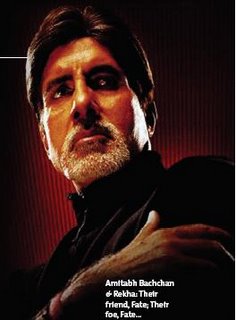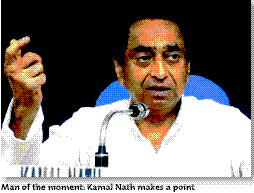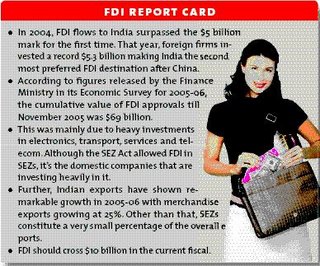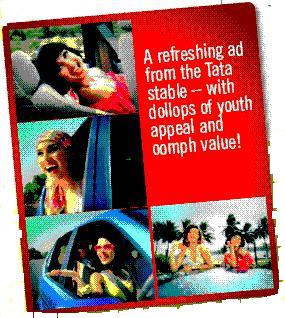 cent Delhi visit on November 17, he announced visa on arrival for them and hoped the Indian government will reciprocate the gesture. The Indian Government however, is yet to respond to the proposal. Karzai has visited India five times in as many years, only to invite investment. He recently constituted a semi-autonomous organisation – AISA, for the purpose. Seeking to allay apprehensions on the security situation in Afghanistan, Karzai said that his country was “picking up”. “My government has not done enough to portray a new Afghanistan.
cent Delhi visit on November 17, he announced visa on arrival for them and hoped the Indian government will reciprocate the gesture. The Indian Government however, is yet to respond to the proposal. Karzai has visited India five times in as many years, only to invite investment. He recently constituted a semi-autonomous organisation – AISA, for the purpose. Seeking to allay apprehensions on the security situation in Afghanistan, Karzai said that his country was “picking up”. “My government has not done enough to portray a new Afghanistan.We will have to find a way to do it,” he pointed out
 . Karzai also promised to cut red tape, “I am trying to have single-window clearance for investors”. He was quick to add that Tata Motors had principally agreed to enter the Afghan market; presently dominated by Toyota. Also, India’s Punjab National Bank has already started its operations in Afghanistan. And what could a better place for investment opportunities than a country that’s trying to rebuild itself? It’s a country with abundance of raw material but hardly any finished products to woo potential investors. Of course, recent events in Afghanistan clearly indicate that quelling violence and making the nation safe and stable for foreign investors is going to be a big challenge for Karzai and his team. Indian investors will be watching him carefully
. Karzai also promised to cut red tape, “I am trying to have single-window clearance for investors”. He was quick to add that Tata Motors had principally agreed to enter the Afghan market; presently dominated by Toyota. Also, India’s Punjab National Bank has already started its operations in Afghanistan. And what could a better place for investment opportunities than a country that’s trying to rebuild itself? It’s a country with abundance of raw material but hardly any finished products to woo potential investors. Of course, recent events in Afghanistan clearly indicate that quelling violence and making the nation safe and stable for foreign investors is going to be a big challenge for Karzai and his team. Indian investors will be watching him carefullyTIME TO DIG UP FURTHER....
Indian children have grown up to the sound of Kabuliwalahs, selling dry fruits and woollens. Kabuliwalah used to be vendors from Afghan capital Kabul and were known to love children and lend money to the needy. Afghanistan produces one of the best watermelons, peaches, grapes, almonds, pistachios and pomegrenates. Indian businessmen trading in Afghan dry fruits have to transport their goods through UAE, Uzbekistan, Iran or Turkmenistan. This hikes their prices and they can’t compete with the dry fruits produced indigenously in Kashmir, Himachal Pradesh and Uttaranchal. With Indo-Afghan trade on the upswing, hopes of getting cheaper Afghan dry fruits have been revived. Besides, Indians can put up food processing plants and cold storages to preserve juicy fruits in Afghanistan. They can also install power plants, leather processing units and woollen garment factories. Kabul will then, be not very far from Delhi!
For Complete IIPM - Article, Click on IIPM-Editorial Link
Source:- IIPM-Business and Economy, 2006
An IIPM And Management Guru Prof. Arindam Chaudhuri’s Initiative
http://pankajsir.42tales.com/
Rashmi Bansal Publisher Of JAMMAG Magazine Caught Red-Handed, for details click on the following links:-
- Hindustan Times Article - Publisher goes underground
- Rashmi Bansal (Editor of JAMMAG)
- Rashmi Bansal(Publisher of JAMMAG)





 the heroine’s sari clings suggestively to her, and where she flutters her eyelashes and sighs helplessly waiting behind a tree for the hero to find her, are slowly fading away. Of course, like any versatile audience, we Indians enjoy popcorn movies. Sometimes we like unwinding without having to think for three straight hours like, recently, in Golmaal. We enjoy seeing our actors and actresses all dolled up, dancing and gyrating for our entertainment. But we also enjoy movies that massage our grey cells. Realising this, Bollywood is witnessing a spurt of ‘thinking’ movies – increasingly liberal, increasingly rebellious – in mainstream cinema. Take Mani Ratnam’s next project.
the heroine’s sari clings suggestively to her, and where she flutters her eyelashes and sighs helplessly waiting behind a tree for the hero to find her, are slowly fading away. Of course, like any versatile audience, we Indians enjoy popcorn movies. Sometimes we like unwinding without having to think for three straight hours like, recently, in Golmaal. We enjoy seeing our actors and actresses all dolled up, dancing and gyrating for our entertainment. But we also enjoy movies that massage our grey cells. Realising this, Bollywood is witnessing a spurt of ‘thinking’ movies – increasingly liberal, increasingly rebellious – in mainstream cinema. Take Mani Ratnam’s next project.





 gets more convenient with a Visa Card or two in tow. That is why cricket’s ubiquitous celebrity – the baadshah of boisterous – Navjot Singh Sidhu has been caught clean by Visa International to spread the good word about the company’s sponsorship of the imminent ICC cricket tournament. And words are what Sidhu can rattle off at the drop of a hat; not just that, switch on any channel – sports or news – chances are that his rumbustious Sidhuisms are doing the rounds. His quotes and his penchant for witticism (bordering on the corny and the eccentric at times, but nonetheless hilarious!) exemplify his friendly and flamboyant nature. Which is probably why Visa ‘got him’.
gets more convenient with a Visa Card or two in tow. That is why cricket’s ubiquitous celebrity – the baadshah of boisterous – Navjot Singh Sidhu has been caught clean by Visa International to spread the good word about the company’s sponsorship of the imminent ICC cricket tournament. And words are what Sidhu can rattle off at the drop of a hat; not just that, switch on any channel – sports or news – chances are that his rumbustious Sidhuisms are doing the rounds. His quotes and his penchant for witticism (bordering on the corny and the eccentric at times, but nonetheless hilarious!) exemplify his friendly and flamboyant nature. Which is probably why Visa ‘got him’. of August in order to promote holiday packages for the ICC Champions Trophy 2006. Winners who devise the best ‘Sidhuisms’ will get to be at the ICC. All you have to do is shop till you drop and foot the bill with your Visa card, and you’re entitled to take part in the contest. Visa is looking at leveraging Sidhu’s wackiness for added impetus – all this to draw in the crowds. The swashbuckling wordsmith is bound to shore up responses to the company’s initiatives, outdoing Visa’s earlier tie with Sachin. In the meantime, here’s a potential Sidhuism winner for the contest: “Fields and the competitive arena were never meant to be churches!” Howzzat! 4Ps
of August in order to promote holiday packages for the ICC Champions Trophy 2006. Winners who devise the best ‘Sidhuisms’ will get to be at the ICC. All you have to do is shop till you drop and foot the bill with your Visa card, and you’re entitled to take part in the contest. Visa is looking at leveraging Sidhu’s wackiness for added impetus – all this to draw in the crowds. The swashbuckling wordsmith is bound to shore up responses to the company’s initiatives, outdoing Visa’s earlier tie with Sachin. In the meantime, here’s a potential Sidhuism winner for the contest: “Fields and the competitive arena were never meant to be churches!” Howzzat! 4Ps 





 g his legendary kindness as a person, he will now be distinguished for all time by an act of aggression. Indeed, Zidane’s status as an emblematic champion of the world’s most universal and popular sport does not fully explain why people have been so obsessed with him. His human qualities, as much as his amazing talent and technical feats on the field, counted equally in establishing his popular acclaim. Football has always been this way. For example, for the Argentineans, the diminutive Diego Maradona represented the revenge of the weak and the deprived. As a result, his countrymen excused his frequent bad behaviour time and again. Similarly, Pelé became the symbol of a harmonious, inter-racial Brazil.
g his legendary kindness as a person, he will now be distinguished for all time by an act of aggression. Indeed, Zidane’s status as an emblematic champion of the world’s most universal and popular sport does not fully explain why people have been so obsessed with him. His human qualities, as much as his amazing talent and technical feats on the field, counted equally in establishing his popular acclaim. Football has always been this way. For example, for the Argentineans, the diminutive Diego Maradona represented the revenge of the weak and the deprived. As a result, his countrymen excused his frequent bad behaviour time and again. Similarly, Pelé became the symbol of a harmonious, inter-racial Brazil.











